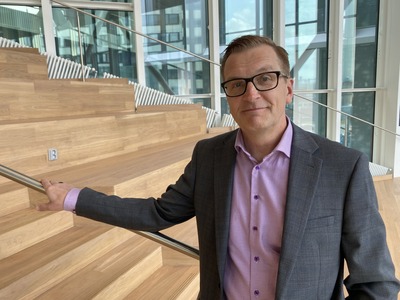Acute leukemia project shows great results in optimizing oncology diagnostic and treatment automation
Picture: Tietoevry
Chief Physician and Professor of personalized cancer medicine Kimmo Porkka and his team at Helsinki University Hospital (HUS) Comprehensive Cancer Center have made significant progress in harnessing advanced technologies to guide diagnosis and treatment of acute leukemia. After two years of research collaboration with Tietoevry, Productivity Leap and research partners, the project, completed in 2022, has yielded successful outcomes.
UsingAI for cancer diagnostics
Kimmo Porkka emphasizes the importance of automating hospital data due to the vast amount of information involved in care of each oncology patient. Automation ensures high-quality care while en route to personalized therapies, which remains the ultimate goal of managing cancer patients. Recognizing the complexity of analysing multidisciplinary hospital data, the project brought together HUS, Tietoevry, Productivity Leap, and other partners to leverage the latest technologies such as data harmonization, AI and machine learning. By piloting advanced profiling of diseased cells, HUS datalake resources, and advanced data integration, the project has accelerated diagnostics and will aid clinicians in the complex management of these patients.
Data harmonisation and Tumor Board solution in focus
As different healthcare units employ varying IT solutions, a remarkable effort was made to harmonize patient data into an international standard data model known as OMOP (Observational Medical Outcomes Partnership). This work facilitates scaling up and commercializing project outcomes in university hospitals in Finland and beyond. Notably, the project's Hospital Tumor Board solution, a data-driven decision support system, has been developed to identify and integrate data, and provide clinical decision support necessary for patient tumor board meetings. This solution will accelerate treatment decisions by automating molecular diagnostics and selection of patients for standard treatment or clinical drug trials.
Kimmo Porkka says: “Detailed tumor profiling and computerized clinical decision support systems will be key in advancing cancer care and matching right patients with the right treatments.”
Collaboration and future plans
The Acute leukemia project has fostered collaboration among several partners with diverse areas of expertise. Tietoevry developed the Tumor Board solution based on iterative feedback from HUS clinicians and played a vital role in creating the required data model. Productivity Leap played a significant role in harmonizing patient data, coding it to align with the standardized data model.
Niina Siipola, Head of AI and Data solutions from TietoevryCare says: “This project has been interesting and meaningful for our team. It is an honour that we can help in cancer care with our technical competences and understanding of health data. This was our first data-driven solution, where we utilized OMOP modelled data.” Kari Natunen from Productivity Leap adds: “We are extremely proud to have been involved in an important and meaningful project under the guidance of Kimmo Porkka. As a certified OMOP SME partner, we believe that similar projects and the use of data in the development of health technology will significantly increase in the future. Consequently, we can contribute to accelerating the utilization of important innovations for various stakeholders.”
Kimmo Porkka looks forward to measuring the actual time savings in treatment protocol decisions and trial matching for cancer patients during the piloting phase with end-users, the clinicians. If the outcomes of the project can for their part increase the percentage of cancer patients participating in drug trials from the current 10% to 20%, substantial savings could be achieved, as trial drugs costing hundreds of thousands of euros per patient are provided free of charge by pharmaceutical companies. Additionally, participating in drug trials grants cancer patients access to cutting-edge treatments years before their commercial availability. HUS's involvement in trials also provides crucial insights into the latest drugs and an opportunity to contribute to the development of ground-breaking treatment protocols.
Looking ahead, the Tumor Board solution developed in this CleverHealth Network project holds the potential for scalability to other diseases, such as breast cancer and prostate cancer. Collaboration with other hospitals such as Turku and Tampere University hospitals are already in the planning stages, with prospects to expand beyond Finland. Another noteworthy outcome of the project is Hematoscope Inc, a digital platform spinoff company led by Dr.Oscar Brück exploring the use of machine vision to automate the analysis of microscope images from pathology specimens. This technology aims to free up pathologist' time for more complex analytics.
In conclusion, the collaborative efforts of the Acute Leukemia project have showcased promising results in optimizing oncology diagnostics and treatment guidance. By harnessing technology and embracing innovation, the project has paved the way for improved patient care, streamlined decision-making, and potential advancements in the treatment of various cancers.

In the picture: Kimmo Porkka
- 19.06.2024 13:49
CleverHealth Network collaboration between HUS and Fujitsu moves dialysis from hospitals to homes - 06.05.2024 14:27
eMOM project has been completed with promising findings in helping mothers to manage their gestational diabetes - 06.05.2024 13:56
The PHEMS EU project promotes the use of pediatric healthcare data between hospitals - 31.01.2024 11:44
ONCOVALUE project to automate data collection and analytics in assessing real-life effectiveness of cancer care - 26.01.2024 13:33
Impressive results, new ideas and interaction at the CleverHealth Network annual seminar - 02.11.2023 12:35
New remote care solution improves patients' quality of life and brings significant savings to society - 22.09.2023 10:26
A graduate thesis within CleverHealth Network studied the cost-effectiveness of clinical support system for diagnosing vasculitis - 22.08.2023 15:06
Acute leukemia project shows great results in optimizing oncology diagnostic and treatment automation - 22.05.2023 09:24
AstraZeneca joins the CleverHealth Network ecosystem - 03.05.2023 14:47
Tackling pandemics event brings latest results from virus diagnostics to creating health safe spaces - 27.04.2023 09:25
Hewlett Packard Enterprise joins CleverHealth Network - 30.01.2023 10:54
CleverHealth Network ecosystem of digital health innovations yields significant results - 07.12.2022 12:23
Significant EU funding for implementing value-based cancer care at European cancer hospitals - 07.10.2022 09:20
Finnish opera singers contribute to E3 project in detecting differences between people as emitters of aerosols - 10.06.2022 14:28
CleverHealth Network ecosystem and E3 Excellence in Pandemics Response project showcased at HIMSS22 Europe - 18.05.2022 14:25
HUS Acamedic is a certified and scalable virtual research and analytics environment for secure processing of health data - 14.03.2022 09:00
CleverHealth Network showcased at HIMSS Global Health Conference 2022 in March - 17.02.2022 07:37
Novartis is the new partner in the CleverHealth Network ecosystem - 10.12.2021 13:11
Finland must renew its forerunner position in healthcare interoperability - 25.11.2021 14:09
The pandemic boosted the multidisciplinary E3 project on indoor health safety - 11.11.2021 09:51
Telia joins the CleverHealth Network ecosystem - 28.10.2021 10:29
Siemens Healthineers joins the CleverHealth Network collaboration - 04.10.2021 10:43
Fujitsu Finland co-develops a digital service to support treatment of gestational diabetes - 27.05.2021 16:27
Health technology research seeks for tools to support the daily life of dialysis patients and their care personnel - 04.05.2021 17:54
Close collaboration around algorithms in the AI Head Analysis project - 27.04.2021 16:07
Planmeca brings their expertise to CleverHealth Network's AI Head Analysis project focusing on early detection of cerebral hemorrhages - 06.04.2021 10:00
Roche the newest partner of CleverHealth Network - 26.03.2021 16:14
Mobile application to treat gestational diabetes - 01.02.2021 10:30
New preventive care for cardiac disease patients - 21.12.2020 15:00
News on novel initiatives and progress of ecosystem projects were shared at the CleverHealth Network event - 01.12.2020 15:01
Kimmo Porkka's project team harnesses the latest technologies to implement personalised therapies - 05.11.2020 15:30
Smart applications for home dialysis help the daily life of dialysis patients and medical staff - 15.06.2020 15:17
CleverHealth Network ecosystem projects are moving forward - 13.03.2020 13:00
Home dialysis for better quality of life and more efficient treatment - 05.03.2020 15:43
CleverHealth Network projects facilitate diagnostic reliability and improve patient safety - 19.02.2020 15:31
CleverHealth Network wants to start new projects – Pfizer latest partner to join the ecosystem - 27.01.2020 13:00
Fresh media coverage of CleverHealth Network - 24.01.2020 10:49
Networking event in December 2019 was a success - 29.11.2019 13:00
Finnish ecosystem of health innovations continues to grow - 29.08.2019 13:00
CleverHealth Network participated, for the first time, in the HIMSS & Health 2.0 conference organized in Messukeskus, Helsinki 11–13 June 2019. - 10.06.2019 15:00
Digital health innovation ecosystem CleverHealth Network granted Growth Engine status and significant additional funding - 17.04.2019 09:00
Faster and more effective care through artificial intelligence - 28.02.2019 12:45
Aiming for easy and safe remote glucose monitoring for diabetic children - 05.12.2018 15:54
HUS recognised for healthcare IT ecosystem - 01.12.2018 15:00
AI-based diagnostic tool to examine cerebral hemorrhage - 07.03.2018 13:43
AI application for treatment of gestational diabetes - 19.09.2017 17:11
Launching a new ecosystem of digital health innovations

